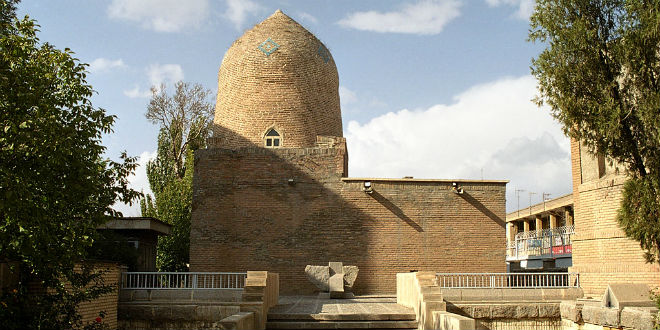Your cart is currently empty!

2,500 Years Later, Tombs of Esther and Mordechai Still Standing in Iran
The burial site of Purim heroes Mordechai and Esther stands proudly in the heart of Iran, proclaiming the Jews’ Biblical victory from within their most prominent modern enemy. This contradiction, based on an extraordinary part of the Bible, symbolizes the peculiar reality of the largest and most ancient Middle Eastern Jewish community outside of the Holy Land.
For several reasons, the story of Purim is an anomaly in the Bible. It does not mention the name of God, and it is the only Biblical account, apart from the Book of Daniel, to take place outside the borders of Israel. The story of the Jewish victory is based in ancient Persia, known today as Iran, the arch-enemy of modern Israel. Tucked away in a corner of Iran is a 500-year old building purported to be the burial site of Mordechai and Esther. A previous structure is believed to have been destroyed in the 14th century by Mongol invaders.
The Iranian city of Hamadan, 200 miles west of Tehran, claims to be the Biblical city of Shushan, the capital of ancient Persia and the setting for the story of Purim.
In those days, when the king Achashveirosh sat on the throne of his kingdom, which was in Shushan the castle. Esther 1:5
One of the most prominent sites in the city is a 500-year-old building built over what many believe is the burial site of Biblical Mordecai and Esther. Most would assume that the site commemorating the Jewish heroes would be hidden away or in danger, but the opposite is actually the case. The site is proudly displayed, known to all, and Persian Jews visit the site annually en masse to read the Book of Esther.
This phenomenon was described by Annika Hernroth-Rothstein, a Swedish political adviser, writer and activist. Hernroth visited the site last year, just before Purim, while writing an article on the political situation in Iran. She expected the Jewish site to be neglected or abused, but was surprised to find that this was not the case.
“All the people I asked for directions knew about the site and who was buried there,” Hernroth told Breaking Israel News. “The tomb is prominent, very accessible, and very well kept.”
Iranian Jews visit the site “by the busloads”, according to Hernroth. “The Jews are very proud of the site as part of their 2,700-year history in Iran,” she said. “They are not free, but neither are they persecuted.”

The tomb bears witness to the complicated status of Jews in Iran. Despite Israel being the arch-enemy of the present regime, that was not always the case. In 1970 there were more than 100,000 Jews in the country. Due to a mass exodus after Iran’s 1979 revolution and the founding of the Islamic republic, there remain fewer than 30,000 Jews Iran today. However, the community still constitutes the largest population of Jews in the Middle East outside Israel.
Politics endanger both the Jewish community and the tomb. In 2010, the Iranian government added the site to their National Heritage list, thereby putting it under government protection. One year later, anti-Israel protesters surrounded the tomb and threatened to tear it down. The tomb was removed from the Heritage list, and the official state news agency explained the decision by pointing out that Purim was a Jewish massacre of Iranians.
“I saw no signs of the riots,” Hernroth said, explaining why she thinks Iran allows the site to exist. “Religion holds a very special place in Iran. Iran keeps the site as a sign to the rest of the world in order to display their belief in religious freedom. There is no real freedom, but there is religious freedom. Ironically, I found several options for kosher food, which is not the case where I live in Sweden.”
Another tradition places the burial site of Mordechai and Esther inside Israel, but near another modern enemy. Located at an archaeological site near Kibbutz Bar’am, the site is very close to Israel’s northern border with Lebanon.
 Since you’re here…
Since you’re here…
We love bringing you the latest news from a Biblical perspective. However, finding, writing and publishing our stories comes at a high cost. BIN relies solely on ad revenues, but we hate bothering our readers with too many ads – so we’re asking for your help. If you enjoy our articles and our uniquely Biblical and prophetic perspective on the news from Israel, please consider making a contribution to Breaking Israel News.
Click here to support our mission.
The post 2,500 Years Later, Tombs of Esther and Mordechai Still Standing in Iran appeared first on Breaking Israel News | Latest News. Biblical Perspective..
Source: Israel in the News

